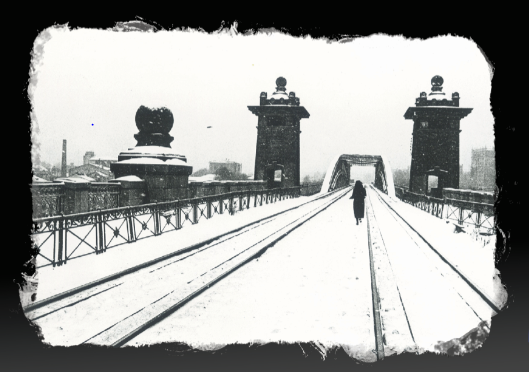
Key Soviet officials associated with the TRIANON/TRIGON case
After retirement, some KGB officers who had been involved in the TRIANON investigation wrote books and articles or were interviewed in podcasts and videos about the case. Some continued service in the FSB or SVR and retired in high positions. A few of the KGB veterans have commented about more recent intelligence operations, including specific active measures events. They have answered questions about KGB involvement in murders, the Skripal poisoning and interference the U.S. 2016 and other election.
The main investigation was conducted by a group of KGB officers detached to a special department within MFA headed by a colonel from the First Chief Directorate (FCD, foreign operations). In 1975 officers from the KGB Second Chief Directorate’s (SCD, counterintelligence) 7th (later 12th) Department (foreigners in the USSR) were attached to this department as part of the Covert Security Service of the MFA.
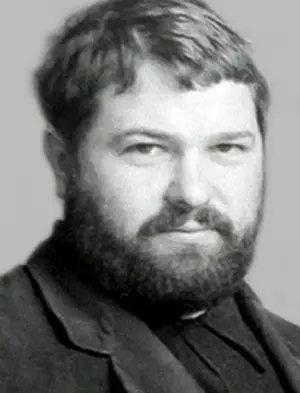
Semyonov, Yulian (Julian Semenov), author of book and producer of TV serial TASS Is Authorized to Announce, 10-part TV serial, which made the case famous.
Central Committee of the Communist Party of the Soviet Union
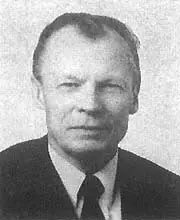
Rusakov, Konstantin Viktorovich, Rusakov in English; Secretary of the Central Committee of the Communist Party of the Soviet Union and Chief of the Department for Liaison with Communist and Workers Parties in Socialist Countries.
Rusakova, Olga (Olya, Olechka) Konstantinovna, his daughter, had become engaged to Aleksandr Ogorodnik, TRIGON, just before Ogorodnik’s death. They had been friends since university days. See In the Corridors of the KGB and Kremlin, The Unlucky Love of Olechka Rusakova
In Agent Covername TRIANON, author Igor Peretrukhin once correctly referred to her as Olechka K (Olga Konstantinovna Rusakova), but later in the book he disguised her thinly as Olga Fomina, employee at the reception room of the Presidium of the Supreme Council of RSFSR.
In article TASS is Authorized to Announce, 20 Years Later, Lieutenant General Vitaliy Konstantinovich Boyarov, First Deputy Chief of the KGB Second Chief Directorate, said:
“Yes. Imagine what would have happened if an agent of the CIA became the son-in-law of a Secretary and chief of a department of the Central Committee. And events there developed rapidly. By the time of his exposure, Ogorodnik had already proposed and seemed to have received consent. The Americans grabbed this unprecedented opportunity with both hands and feet. In the radiograms that we were able to decipher, they regularly inquired about his possible spouse, in every way emphasizing the importance of this moment.”
Moskovskiy Komsomolets, 21 February 1997 / Московский Комсомолец, ТАСС Уполномочен заявить 20 лет спустя
Ministry of Foreign Affairs officalsx
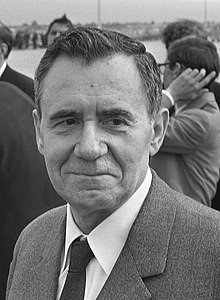
Gromyko, Andrei Andreyevich, Minister of Foreign Affairs (MFA), 1957-1985
A little-known fact: In 1949 GRU and NKVD intelligence were combined and subordinated to the Intelligence Committee (КИ – Комитет информации) under the Ministry of Foreign Affairs. Gromyko was its Deputy Chief. The KI controlled all military and political intelligence. The GRU was returned to the military in 1952.
Gromyko was disliked by the KGB and reportedly interfered with the investigation of TRIANON/TRIGON.
“… the implementation of operational materials was delayed more than six months, largely because of intrigues between the leadership of the Foreign Ministry and the KGB, of course. The Chief of the Security Service of the Foreign Ministry, General Kurushev (sic, Kuryshev) repeatedly informed the Minister, Andrei Gromyko, about Ogorodnik, whose response was something like this: “There are no traitors in the Foreign Ministry.”[i]
Zemskov, Igor Nikolayevich, Deputy Minister Ministry oi Foreign Affairs (MFA) 1973-1982
- As Deputy Minister MFA, under Zemskov’s jurisdiction was the MFA’s Covert Security Service (zakonspirovannaya sluzhba bezopasnosti). The Chief of the Security Service was KGB Colonel Mikhail Ivanovich Kuryshev; it was manned largely by officers from the KGB First Chief Directorate’s (FCD/PGU)’s 7th Department (foreigners in the USSR). Igor Peretrukhin ran the TRIANON investigation from the Security Service of the MFA. The Security Service was part of the MFA Special Department (spetsotdel) and also referred to as the Spetsgruppa, gruppa, or just the sluzhba.[ii]
KGB officers involved in the TRIGON/TRIANON operation
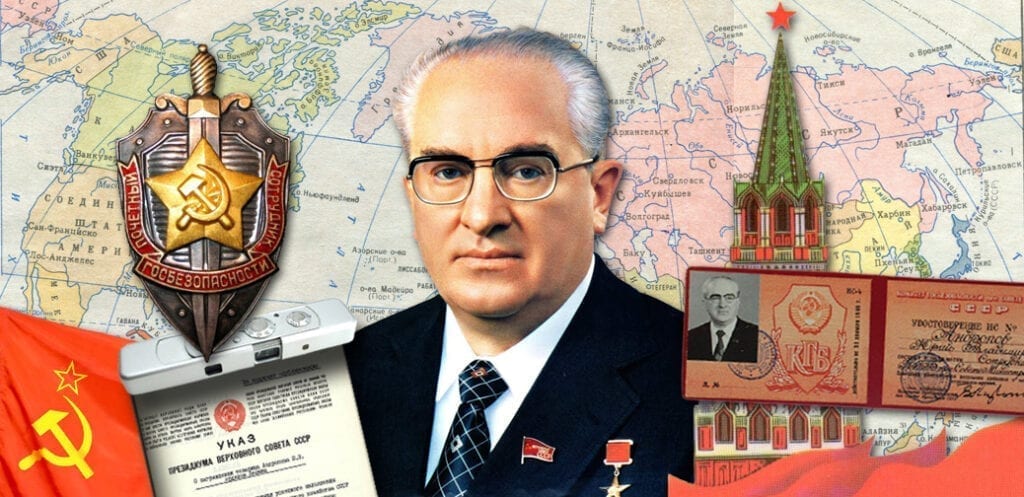
Andropov, Yuri Chairman of the KGB
Some KGB associates called Andropov the true “father of Perestroika,” whose version, of course, would have been under KGB and party control. Deputy Chairman and Chief of the Fifth Directorate (“Ideology”) General-Army Bobkov claims he was the co-author.
Andropov is famous for telling Gorbachev “We do not know the country we live in.”
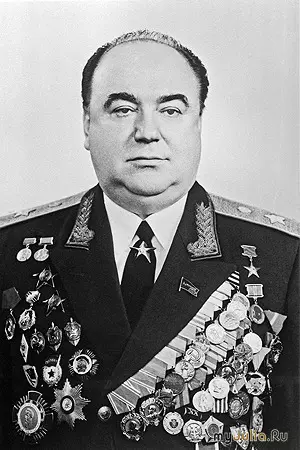
Tsvigun, Semen Kuzmich, General of the Army KGB, 1st Deputy Chairman of the KGB. He considered the TRIGON/TRIANON case a failure and did not want to approve awards and medals for KGB officers. He was overruled by Andropov. There is juicy speculation over his relationships, activities, and his death: suicide or murder.

Tsinev, Georgii Karpovich, General of the Army KGB, Chief 2nd Chief Directorate 1967-1970; Deputy Chairman of the KGB 1970-1982; 1st Deputy Chairman of the KGB 1982-1985. Wikipedia википедия цинев (Russian)
- from Stanislav Lekarev’s Confessions of a Chekist: “roles played by Tikhonov and Gluzsky so obviously resembled their originals from counterintelligence – generals Grigory Grigorenko and Konstantin Boyarov – that it irritated other KGB leaders, in particular the Deputy Chairman of the KGB [Georgi Karpovich] Tsinev,* who was used to sharing the glory of his subordinates. …” CIA 1958 assessment; Wikipedia википедия цинев (Russian)
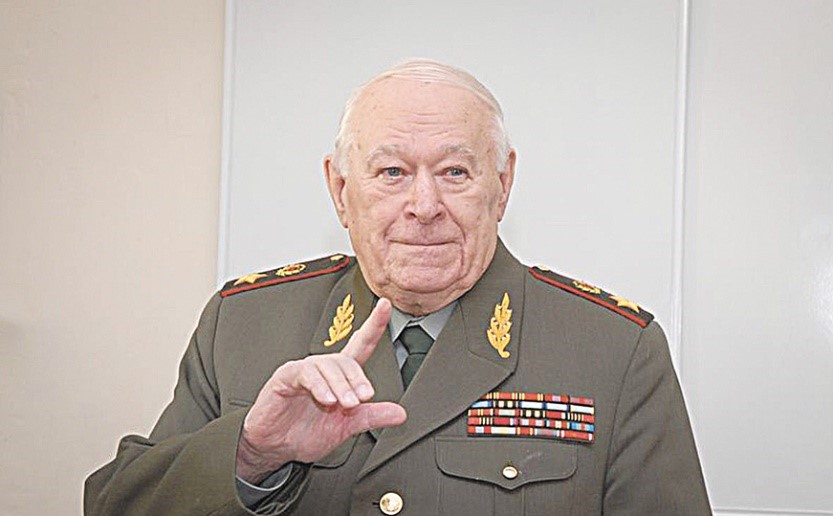
Bobkov, Filipp Denisovich / Бобков, Филипп Денисович General of the Army KGB
Deputy and later 1st Deputy Chairman; Following WW II combat duty, he began his intelligence career in GRU SMERSH, but spent most his career as Chief of the KGB Fifth Directorate (slang pyatka or ideology), responsible for political counterintelligence: suppression of internal dissent in the former Soviet Union. He was widely regarded the chief KGB ideologist or “KGB brain”.[1] After being named Deputy and later 1st Deputy Chairman, he reportedly continued to control the 5th Directorate.
In his obituary on BBC Russian service: “He can be considered the founder of what the KGB later called “active measures,” which today around the world they call informationnye vbrosy (fake news; hoaxes, disinformation, etc).” (Его можно считать основоположником того, что в КГБ впоследствии называли “активными мероприятиями”, а сегодня в мире именуют “информационными вбросами”). Bobkov entered the KGB in SMERSH and knew every KGB chairman except the first, Merkulov, who was shot.
Dutch Sovietologist Robert van Voren speaks about Soviet repressive psychiatry and its surviving offshoots: “I found some very interesting information when I was working in the archive of the Stasi service, which used to actively cooperate with the KGB and hold joint annual meetings to figure out the best ways to fight enemies of the socialist order. For example, Filip Bobkov, director of the KGB’s 5th Department that dealt with dissidents, essentially stated that half of those arrested were mentally ill. In summer 1989, when Germany’s unification was in full swing, Bobkov came to Berlin and told Stasi Director Erich Mielke that it was the work of the mentally ill. Mielke was furious and said that those were antisocialist elements but clearly not mad people.”
First Chief Directorate (FCD) USSR / Первое главное управление (ПГУ) КГБ СССР – foreign intelligence
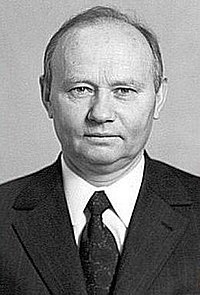
Kryuchkov, Vladimir Aleksandrovich, General of the Army KGB (1974-1988)
Chief of the First Chief Directorate (FCD/PGU)
FCD 1st Department (USA) /ПГУ КГБ 1-й отдел ПГУ (США)
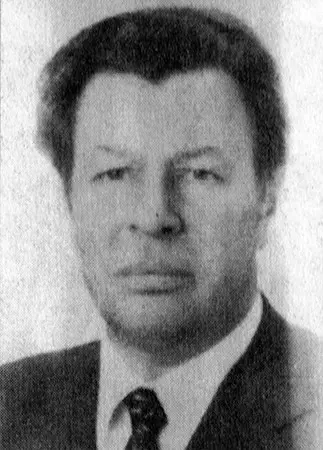
- Kuryshev, Mikhail Ivanovich, KGB Colonel[iii]. Bio:
Assistant to the Chief of a KGB department a (February 1956 – October 1960);
Operational worker (case officer) at the KGB station in Vienna (October 1960 – May 1966);
Senior Assistant to the Chief of a Department of the KGB FCD/PGU (May 1966 – July 1969);
Deputy KGB Rezident in Vienna (July 1969 – August 1973);
Deputy Chief of a Department of the FCD/PGU KGB (August – November 1973);
In 1973, the *Ministry of Foreign Affairs Covert Security Service was created. This Security Service played the primary role in conducting the TRIANON investigation. Kuryshev was detached from the First Chief Directorate (FCD) as Chief. It was manned by and subordinated to the 7th (later 12th) Department of the KGB First Chief Directorate. Its employees were part of the MFA Special Department (spetsotdel). The activities of the Security Council were supervised by Deputy Minister I. Zemskov.
Colonel Kuryshev’s position 1973-1987:
- Officer of the Active Reserve in the position of department chief, as Chief of the Security Service of the MFA;
- Deputy Head of the Special Department of the MFA (November 1973 – October 1987);
- Conflicting subordination: Under Zemskov: В 1973 г. была создана законспирированная Служба безопасности МИДа, подчиненная 7-му (затем 12-му) отделу ВГУ КГБ при СМ СССР (2 Главное управление (контрразведка) (?). Ее сотрудники числились в составе спецотдела МИД, деятельность Службы безопасности курировал заместитель министра И.Н.Земсков
- In December 1975 Kuryshev was an Illegal in Vienna, when with Oleg Kozlov he participated in the kidnapping in Vienna of Nicolas Shadrin (alias for Nikolai Fyodorovich Artamonov / николай федорович артамонов. Major General Oleg Kalugin was also involved in this operation.
Klimenko, Vaentin Grigoryevich – 1976-77 Lieutenant in the 1st Department SCD; Author of Notes of a Counterintelligence Officer. An inside look at the confrontation between the KGB and the CIA, and not only this.. (Jul 2022); retired as Lt General
Born on December 15, 1944, in Moscow.
In May 1963 he graduated from high school. 1963 – 1966 he served in the Soviet Army. After demobilization, he worked as a handyman at the All-Russian Research Institute of the Printing Industry, then as a modeler in workshop No. 12 of Mosproekt-2, graduated from English courses at the M. Torez Institute of Foreign Languages.
In state security organs: from August 1, 1968 he studied at the 2nd faculty of the F.E. Dzerzhinsky VKSH KGB, after his graduation in 1973 he worked in the 1st section of the 1st department of the 2nd Chief Directorate of the KGB under the Council of Ministers of the USSR. He held the following positions:
- Assistant to the Chief of the 1st Department of the 2nd Chief Directorate of the KGB of the USSR – Chief of the Operational Group for the Development of the CIA Station in Moscow of the 1st Department (for 1980 – 1983);
- Deputy Chief of the 1st Department of the 2nd Chief Directorate of the KGB of the USSR – Chief of the 1st Department (1983 – 1991);
- Deputy Chief of the 1st Department of the 2nd Chief Directorate of the KGB of the USSR – Chief of the 1st Department (1983 – 1991);
- Deputy Chief of the 1st Department of the 2nd Chief Directorate of the KGB of the USSR – Chief of the 1st Department (1983 – 1991);
- Deputy Chief of the 1st Department of the 2nd Chief Directorate of the KGB of the USSR – Chief of the 1st Department (1983 – 1991);
- Deputy Chief of the 1st Department of the 2nd Chief Directorate of the KGB of the USSR – Chief of the 1st Department (1983 – 1991);
- Deputy Chief of the 1st Department of the 2nd Chief Directorate of the KGB of the USSR – Chief of the 1st Department (1983 – 1991);
After the collapse of the USSR, he continued to serve in the security organs of the Russian Federation:
- Chief of the 1st Service (American) of the Directorate of Counterintelligence Operations of the Ministry of Security of Russia, then
- 1st Deputy Chief of the Directorate of Counterintelligence Intelligence Operations (UKRO) of the Federal Counterintelligence Service (FSK)
- FSB of Russia, since 1997 – Chief of the UKRO – Deputy Chief of the Counterintelligence Departament of the FSB of Russia,
- From November 5, 2000 – Representative of the FSB of Russia in Israel. On 5 November 2004 he returned from his duty assignment.
- On January 29, 2005, he was discharged from active military service upon reaching the age limit.
Rank: Major General (1994); retired as Lieutenant General
Awards: Order of the Red Star (1986), the Order of the Red Banner of Labor (1990), Order of Military Merit (1999), badges “Honorary State Security Officer” (1981) and “Honored Employee of the Security Bodies of the Russian Federation” (2000), medals, public awards. Source: V.G. Klimenko, Notes of a Counterintelligence Officer
ЗАПИСКИ КОНТРРАЗВЕДЧИКА. ВЗГЛЯД ИЗНУТРИ НА ПРОТИВОБОРСТВО КГБ И ЦРУ, И НЕ ТОЛЬКО …)
Автор: Клименко Валентин
После развала СССР продолжил службу в органах безопасности РФ: начальник 1-й Службы (американской) Управления контрразведывательных операций МБ России, затем 1-й заместитель начальника УКРО ФСК – ФСБ России, с 1997 г. – начальник УКРО – заместитель начальника Департамента контрразведки ФСБ России, с 5 ноября 2000 г. – представитель ФСБ России в Израиле. 5 ноября 2004 г. вернулся из командировки. 29 января 2005 г. уволен с действительной военной службы по достижении предельного возраста.
Звания:
- Генерал-майор (1994 г.);
- Генерал-лейтенант;
Награды: ордена красной Звезды (1986 г.), Трудового Красного Знамени (1990 г.), «За военные заслуги» (1999 г.), нагрудные знаки «Почетный сотрудник госбезопасности» (1981 г.) и «Заслуженный сотрудник органов безопасности Российской Федерации» (2000 г.), медали, общественные награды.
Источник: В.Г.Клименко, Записки контрразведчика. Взгляд изнутри на противоборство КГБ и ЦРУ, и не только…
Pisarev, Boris / Писарев, Борис– Officer in the 1st Department, DCD; after her detention, Pisarev showed the “thin file” on Martha Peterson to the bosses
Second Chief Directorate USSR (SCD) / Второе главное управление КГБ СССР (ВГУ)
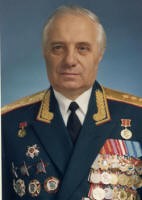
Grigorenko, Grigoriy Fyodorovich, KGB Lieutenant General, Chief of the Second Chief Directorate 1970-1982; Responsible for the overall TRIANON operation. See Wikipedia for Григоренко, Григорий Фёдорович
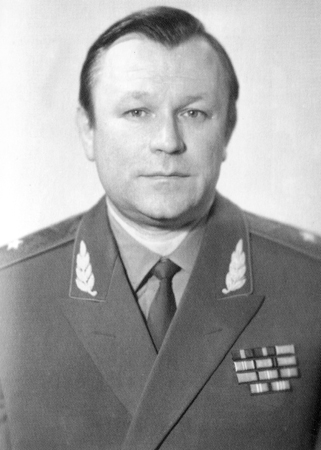
Boyarov, Vitaliy Konstantinovich, retired KGB Lieutenant General, First Deputy Chief of the SCD. Head of the investigation to catch Ogorodnik. See Wikipedia for Бояров, Виталий Константинович
Interview with Aleksandr Khinsteyn / (Hinstine) Tass is Authorized to Announce 20 Years Later published in Moskovski Komsomolets. This is the first known information on the actual details versus that given by Julian Semyonov.
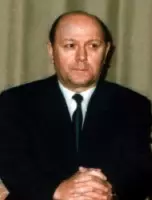
Rasshchepov, Yevgeni Mikhaylovich, KGB Major then Lieutenant General, 1960s-1997, Chief of the First Department of the SCD (Counterintelligence against USA).
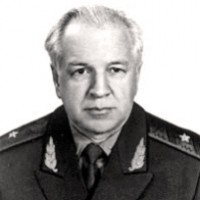
Krasilnikov, Rem Sergeyevich, Major General KGB, Deputy Chief SCD and Chief Second Department (UK) of the SCD. Expert in countermeasures against the American intelligence services of that time. He had worked in the Second Chief Directorate since 1949. During the 1980s, he was Chief of the First (American) Department within the KGB’s Second Chief Directorate, which placed him in charge of investigating and disrupting the operations of the Central Intelligence Agency in Moscow. Prior to that he headed up the Second Department of the SCD, which targeted the intelligence operations of the United Kingdom. From 1979 until his retirement in 1992 he was the Chief of the First American Department. Author of: “The Ghosts from Tchaikovsky Street” (Geya publishing house 1999); [Translator: Tchaikovsky Street here means the American Embassy]. Also Spy Hunters: KGB vs. MI-6. https://en.wikipedia.org/wiki/Rem_Krassilnikov
- Krasnilnikov narrates Youtube video Spy Hunter / Охотник за шпионов, 1979-1988, covers Gerber, Downing, Sellers (in Russian)
Obit March 2003 New York Times by James Risen
- Books by Rem Krasilnikov: https://profilib.space/avtor/rem-krasilnikov.php
- Author of Spy Hunters
KGB vs. MI-6 (КГБ против МИ-6. Охотники за шпионами) video
Second Chief Directorate’s Seventh Department (foreigners in the USSR) / 7th Department of the SCD / 7-й отдел ВГУ
Combating terrorism, monitoring foreigners with emphasis on watching intelligence officers working under cover at embassies and representations
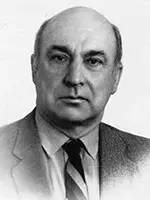
Kevorkov, Vyacheslav Yervandovich, Major General KGB, Chief 7th Department of the SCD (work with the MFA). Author of General Boyarov, which has a chapter called TRIANON. Prototype of KGB General Konstantinov in the novel by Yulian Semenov TASS is Authorized to Announce and the 10-part film with the same name. Russian Wikipedia under Кеворков, Вячеслав Ервандович
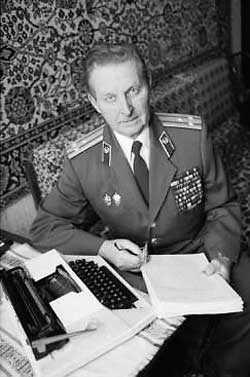
Peretrukhin Igor Konstantinovich, KGB Lieutenant Colonel (later Colonel), retired, 1978 Chief of the 7th Department of the SCD (foreigners in the USSR); attached to the Ministry of Foreign Affairs Clandestine Security Service for the period of the investigation; author of book Agent Codename TRIANON, which presumably presents the KGB’s “official” version of events. Book available only in Russian.
Consultant to TV teleserial TASS is Authorized to Announce
Almost the exact book published later as “What TASS Did Not Announce: The True Story Игорь Перетрухин / О чем не заявил ТАСС. Подлинная история “Трианона”
Leytan, Nikolay, Senior Lieutenant KGB, Seventh Department of the SCD, attached to MFA Security Service. Received medal For Combat Merit for his role in the TRIANON investigation.
Molodtsov, Vladimir (“Volodya”) V., Captain (later made colonel), 7th Department of SCD KGB, attached to MFA Security Service. Received medal For Combat Merit for his role in the TRIANON investigation.
- ? Molodtsov, Yuri – in Peretrukhin’s book, probably error
- For Combat Merit: Молодцов и «За боевые заслуги»
Shitikov, Vladimir, 7th Department of the SCD attached to MFA Security Service, awarded Medal for Combat Merit (or Yuri Shitikov in Peretrukhin’s book) “sent to staff the Seventh Department for Work at the Ministry of Foreign Affairs (Sedmoy otdel po rabote po MID): Grechayev, Udalov, Shitikov, Leytan, and Molodtsov” Received medal For Combat Merit for his role in the TRIANON investigation.
Udalov, – Seventh Department of the SCD, attached to the MFA Security Service. Received medal For Combat Merit for his role in the TRIANON investigation.
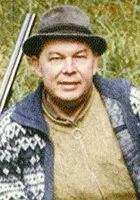
Kostyrya, Vladimir Ivanovich, Colonel, Deputy Chief of Kevorkov’s SCD 7th Department’s OTS (production of technical monitoring equipment /7-й отдел (изготовление технических средств наблюдения)
Fifth Directorate (Ideology, Sabotage) / Пятое управление КГБ СССР (Идеология, диверсия) “Пятерка”
Chief: Filipp Bobkov, also a member of the KGB Secretariate – see earlier entry
Yevgeni Grig (alias for Colonel Yevgeni Grigoryevich Semenikhin, KGB officer for 33 years who worked first in the 7th Directorate (surveillance) but mainly in the 5th Directorate, “ideological sabotage” / Евгений Григорьевич Семенихин, полковник КГБ, 33 года проработавший в ведомстве, в основном, в 5-м Управлении – борьба с идеологическими диверсиями. Author of book Yes, I Worked There, A KGB officer’s notes / Евгений Григ. “Да, я там работал: записки офицера КГБ”
Seventh Directorate KGB USSR (Surveillance) / Седьмое управление КГБ СССР (“Семерка”)
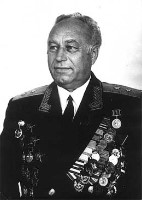
Beschastnov, Aleksei Dmitriyevich, Lieutenant General KGB. Chief of the Seventh Directorate 1974-1981
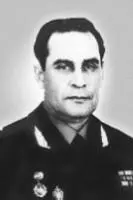
Kalabashkin, Mikhail Grigoryevich, Major General, Deputy Chief of the Seventh Directorate in charge of surveillance and technical support (spelled Kolobashkin on the Sword and Shield website: КОЛОБАШКИН Михаил Георгиевич (на 1977 г.). In Igor Peretrukhin’s book Agent Codename TRIANON, for the 15 July 1977 Operation Setun, Marti Peterson’s capture, “… Seventh Directorate Major General Mikhail Grigoryevich Kalabashkin led the external surveillance and technical support forces.”
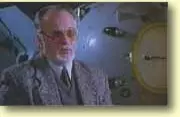
Prelin, Igor Nikolayevich, retired KGB Colonel, an outspoken officer who appears in a number of articles and TV videos, including American History (Heroes) Channel’s documentary Shadow Ops. One of the prototypes for Slavin in TASS is Authorized to Announce TV serial.
– Featured on Top Secret The True Story of TASS is Authorized to Announce.
– In American History (Heroes) Channel’s documentary Shadow Ops. Col. Prelin sheepishly admitted that after giving a practical demonstration of her martial arts abilities, one of the KGB officers “couldn’t have sex for two years.”
- Interview about famous KGB spies: PBS Red Files part of series
- Prelin on death of KGB defector who died 15 July 2015 “natural causes” Youtube in Russian
- Youtube KGB defector who died
- Kruchkov, Putin supported Trump election, assassinations
- Takes David Remnick to interview with Kryuchkov in
Resurrection: The Struggle for a New Russia By David Remnick
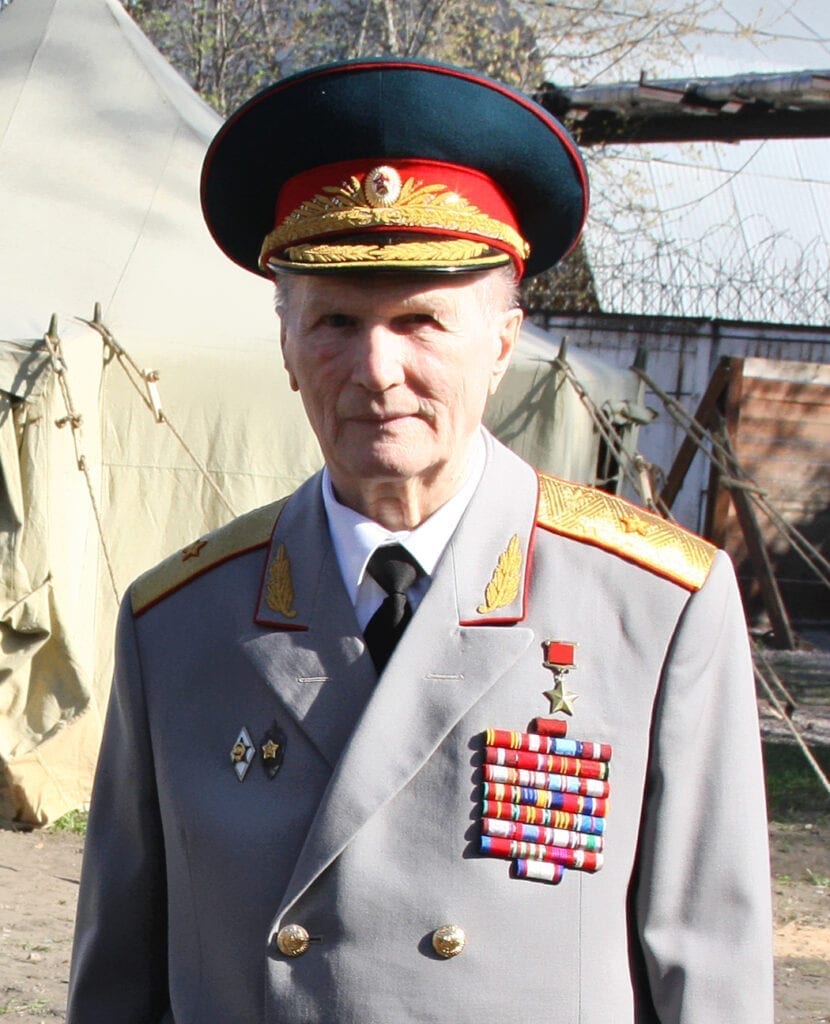
Zaitsev, Gennady Nikolayevich, KGB Lieutenant General, assigned to the KGB 7th Directorate (Surveillance). In August 1977 (a month after the capture of Marti) he was named commander of Spetsnaz Alpha Group. Not to be confused with the younger Vladimir Nikolayevich Zaitsev, who was assigned to his Alpha Group unit.
[i] What TASS was not Authorized to Announce… (see translation); original Russian:
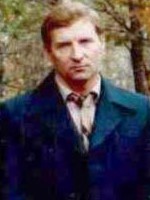
Zaitsev, Vladimir Nikolayevich, Captain, In several articles called the “Legend of legends,” KGB karate champion. Worked in the 7th Directorate and wore a militia uniform at the ambush of Martha Peterson at the bridge, during which “he aided his struggling subordinates by grabbing her hand and squeezing her wrist, breaking her watchband.” Marti described him as handsome and spiffy in his uniform. She has a famous sense of humor and decided to flirt with him, swapping hand squeezes. A quote from The Widow Spy:
- “Glancing down, I saw that my watchband on my left wrist had popped open in the melee. Following my eyes, the militiaman looked down. He gently adjusted and clasped the watchband. I realized then that we were actually holding hands, this young man and I. So, the devil made me do it, I squeezed his hand twice. Damned if he didn’t squeeze back. I’m sure he was amazed that this young woman had been arrested. Could she really be a spy?”
From Wikipedia” “… CIA Spy Arrests
From 1985 to 1992, [Vladimir Nikolayevich] Zaitsev participated in operations to capture 13 spies of the CIA and intelligence units of the other Western countries. Aldrich Ames (sic) provided information about US intelligence and it was Zaitsev’s group who was considered the most preferable for capturing them. In particular, Zaitsev took part in 1977 in the arrest of CIA spy Martha Peterson, officially the vice-consul of the US Embassy, and the detention of the recruited CIA Alexander Ogorodnik (Trianon), who committed suicide during the attempt to detain him. Zaitsev said that before the operation he dressed in the uniform of a militia officer, and during the operation grabbed Peterson’s hand and broke her wristwatch band, which contained a microphone connected to a recording device.”
Captain Zaitsev was commander of the 4th Section [otdeleniye] of Gennady Zaytsev’s Spetsnaz Alpha Group. He was praised especially for his training role. He eventually retired as KGB colonel and Deputy Chief of Spetsnaz Alpha Group.
http://nvo.ng.ru/spforces/2004-03-05/7_ogorodnik.html
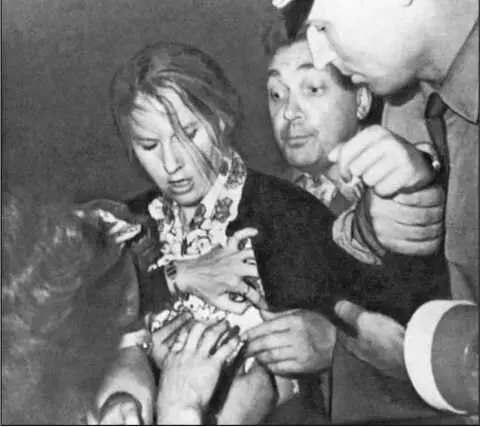
Sharovatov, Viktor, Colonel – MK newspaper 21 Feb 1997 signed by Sharovatov; Marti; Sharovatov, center over Marti’s left shoulder; and Zaitsev (right, in uniform) at the seizure on the bridge. In the skit of Catch them in the Act, Sharovatov is one of the officers who seized Martha Peterson on the bridge.
Yerofeyev, Lt. Colonel, Chief of one of Sharovatov’s Service (Sluzhba) sections (nachalnik otdeleniya sluzhby). Included in the skit of Catch them in the Act along with Col. Sharovatov. He captured Marti at the bridge and was briefly knocked unconscious by a karate kick.
Inzhevatov, Senior Lieutenant, In the skit of Catch them in the Act, one of the officers who participated in the capture of Martha Peterson on the bridge
Kotov, Oleg – author of several articles – author of What TASS was Not Authorized to Announce, March 2005, Independent Military Review
Solomin, Igor – in room with Kevorkov when Ogorodnik committed suicide
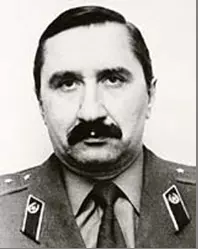
Atamanenko, Igor Grigor’yevich, Lt. Col KGB (ret), KGB historian and author of articles and books; People Are not Born Spies, (Шпионами не рождаются),
https://coollib.com/b/440454/read
Lekarev, Stanislav V, Colonel KGB, Historian, parents were theater actors, used Sovfilm cover connections in UK assignment. 13 years (1975-1988) internal counterintelligence in the KGB SCD, operational monitoring of the activities of accredited American correspondents. Participated in the TRIANON operation. Consultant for tele-serial Tass is Authorized to Announce.
https://www.peoples.ru/military/scout/stanislav_lekarev/
- From his book Confessions of a Chekist: “… no one will make me doubt that any responsible place in a structure requiring high professionalism, which includes intelligence services, should move from mentor to the most talented student. Only continuity allows to maintain a competitive professional school of excellence in any field of human activity. Substitution of this fundamental rule by the principles of “management” (the ability of the executor to act on the basis of solely vested interests of the leader), “political unanimity” (when belonging to the party is more important than professionalism) and the postulate of “there are no irreplaceable people” lead to the loss of the viability of the system and its collapse.” See Tsinev
As reported by Mark Hackard’s Robert Maxwell and the KGB , Lekarev also had comments about mysterious deaths surrounding KGB officers and British politician/publcist/spy Robert Maxwell, father of sex-traffickers Ghislaine Maxwell and Jeffrey Epstein.
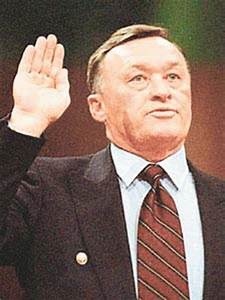
American citizen Oleg Kalugin
Kalugin, Oleg – KGB Major General, in his First Dirctorate (1994) met with Karl Koecher in Prague about on Ogorodnik, pg. 187-188 “In the mid-1970s, the Czechs had managed to re-establish contact with one of their agents who had fled to America following the events of 1968. The Czech immigrant had taken a job as a contract employee of the CIA, and he ad access to internal CIA communications as well as messages intercepted by the agency around the world. The Czechs made contact with the man in Washington, and he agreed to resume working for them. Most of the information he supplied to the Czechs was of of little value, but he forwarded the names of three Soviets in Columbia who were targets of CIA recruitment. One was a diplomat named Ogorodnik.”
Czech intelligence had “the CIA mole” return to Prague, where he and his wife Hana were debriefed. Kalugin thought he was a double agent for the CIA.
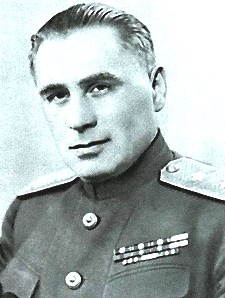
Sudoplatov, Pavel Anatolyevich, Lt. General KGB / Special Tasks / Судоплатов, Павел Анатольевич , Генерал-Лейтенант КГБ, Специальные операции
Cardinals go to Hell http://vilavi. ru/prot/card/card3-2. shtml
– https://e-news.su/politics/262862-tass-upolnomochen-zayavit-glazami-cru-kak-marta-peterson-obvela-kgb-vokrug-palca.html 18:53 / 02.02.2019
- “doubts that Ogorodnik committed suicide”
Americans
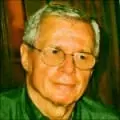
Fulton, Robert, CIA Moscow Station Chief 1975-1977
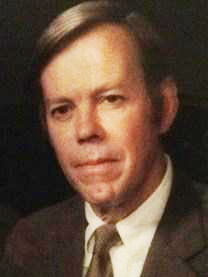
Hathaway, Gus, CIA Moscow Station Chief 1977-1979, died 2013
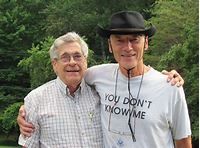
Platt, Jack “Cowboy” – CIA Station Chief Moscow who was friends with KGB case officer Gennadi Vasilenko. Vasilenko was released from imprisonment in the spy trade for 10 Russian illegals in the US, including Anna Chapman.
Endnotes
[ii] http://shieldandsword.mozohin.ru/kgb5491/reserv/min/mid.htm “In 1973, the KGB Ministry of Foreign Affairs’ clandestine Security Service (законспирированная) служба безопасности КГБ МИД (Министерство иностранных дел СССР) was created. It was subordinated to the 7th (then 12th) Department of the KGB Second Chief Directorate (SCD) under the Council of Ministers of the USSR. Its employees were part of the Special Department (спецотдел) of the Ministry of Foreign Affairs; the activities of the Security Council were supervised by [MFA] Deputy Minister I. N. Zemskov.” (создана законспирированная Служба безопасности МИДа, подчиненная 7-му (затем 12-му) отделу ВГУ КГБ при СМ СССР (2 Главное управление (контрразведка). Ее сотрудники числились в составе спецотдела МИД, деятельность Службы безопасности курировал заместитель министра И.Н.Земсков)
Also Wikipedia entry in Russian under Земсков, Игорь Николаевич
From Igor Peretrukhin’s Agent Codename TRIANON on this security group (gruppa) or security service (sluzhba) in the MFA: “In the extremely complicated international situation during the Cold War, when the intelligence services of the opponent stepped up their activities, the Second Chief Directorate perfected its work methods. There were subunits with new functions both directly in the directorate and beyond its boundaries in the form of security services in facilities with possible agent penetration. In 1975 one such service was created within the Ministry of Foreign Affairs of the USSR.
The creation of the Security Service did not happen without some difficulties associated with the ambiguity of evaluating its future activities in the leadership circles of the ministry. But eventually Andrey Gromyko gave his consent. After that, a group of operatives led by Col. Mikhail Ivanovich Kuryshev for the first time officially entered into the staffing of one of the ministry departments and occupied the rooms given to them in the building on Smolenskaya Square. Besides this, a number of officers from other units of our department, and also graduates of the higher school of the KGB of the USSR who earlier had graduated from civilian higher education institutions and then undertook language training, were sent to staff the Seventh Department for Work at the Ministry of Foreign Affairs (Sedmoy otdel po rabote po MID): Grechayev, Udalov, Shitikov, Leytan, and Molodtsov. It was determined that Kuryshev’s communications with the minister on all questions would be carried out through the Deputy Minister, Igor Nikolayevich Zemskov.”
[iii] http://www.shieldandsword.mozohin.ru/personnel/2019/kuryshev_m_i.htm
[…] Key Soviet officials associated with the TRIANON/TRIGON case […]
Hello,
I saw the show on History Channel and I’ve seen it several times. It’s great that you were the one to break down the barriers and be the amazing operative you were (are). Thank you for your service and I wish you a happy and healthy future.
Terry